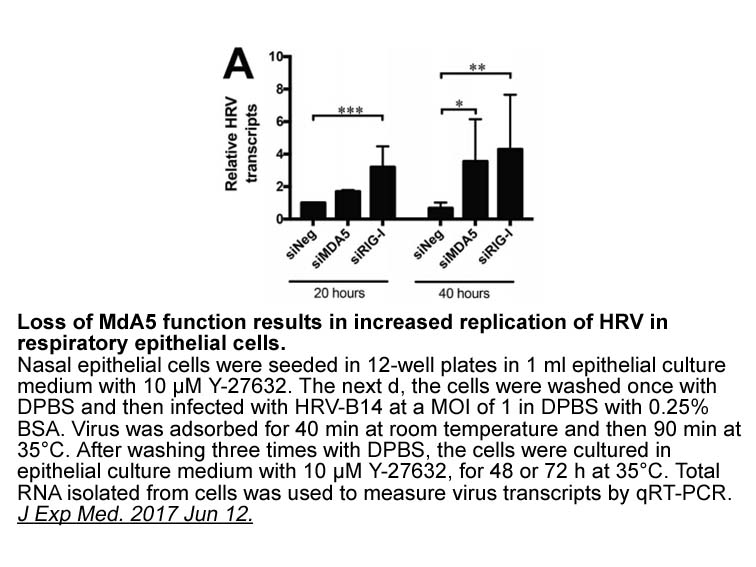Archives
br Introduction Verticillium dahliae Kleb is a soil borne
Introduction
Verticillium dahliae (Kleb.) is a soil-borne fungal pathogen that is able to infect hundreds of plant species, and causes vascular wilt disease [1], [2]. In nature, the infection of V. dahliae initiates from the germination of resting structures called microsclerotia [3]. The germinated mycelia penetrate plant root through wounded sites or directly penetrate cortical surface by secreting cell wall degrading enzymes [4], [5], [6], [7], [8]. As many fungal pathogens, V. dahliae has to overcome plant basal defense by secreting all kinds of small proteins, also known as effectors, for successful colonization [9], [10]. Once colonized, the mycelia grow in plant xylem and  produce spores, blocking water transport that results in stunting, wilting and finally dying of the whole plants [11], [12].
The melanized, multicellular microsclerotium was formed from hyphal swelling and subsequent lateral cell budding [13]. Due to the long term persisting and continuous accumulation in the soil, microsclerotia become major threat on economical crops [14], [15], [16], especially on cotton plants in China. Gene functional analysis has shown that microsclerotial formation and germination are controlled by some conserved signaling pathways such as G-protein and MAP Kinase [17], [18]. Some genes were found to be involved in not only microsclerotial development but also pathogenicity. These include genes encoding a trypsin protease, a small secreted hydrophobin, and glutamic nisoldipine rich protein [19], [20], [21]. The regulation of signaling pathways and functional genes in development and pathogenicity remain to be elucidated.
In the previous work, we constructed a T-DNA insertion library based on V. dahliae strain V592, which was isolated from cotton plants in Xinjiang, China [21]. Phenotypic screening showed genes functionally involved in development and pathogenicity [21]. Here we show one T-DNA insertion mutant reduced virulence on cotton plant and showed knock-down of VdUDG, a gene encoding a uracil-DNA glycosylase. Functional study of VdUDG gene suggested that it regulated spore development as well as transcription of many genes encoding multiple signaling pathways.
produce spores, blocking water transport that results in stunting, wilting and finally dying of the whole plants [11], [12].
The melanized, multicellular microsclerotium was formed from hyphal swelling and subsequent lateral cell budding [13]. Due to the long term persisting and continuous accumulation in the soil, microsclerotia become major threat on economical crops [14], [15], [16], especially on cotton plants in China. Gene functional analysis has shown that microsclerotial formation and germination are controlled by some conserved signaling pathways such as G-protein and MAP Kinase [17], [18]. Some genes were found to be involved in not only microsclerotial development but also pathogenicity. These include genes encoding a trypsin protease, a small secreted hydrophobin, and glutamic nisoldipine rich protein [19], [20], [21]. The regulation of signaling pathways and functional genes in development and pathogenicity remain to be elucidated.
In the previous work, we constructed a T-DNA insertion library based on V. dahliae strain V592, which was isolated from cotton plants in Xinjiang, China [21]. Phenotypic screening showed genes functionally involved in development and pathogenicity [21]. Here we show one T-DNA insertion mutant reduced virulence on cotton plant and showed knock-down of VdUDG, a gene encoding a uracil-DNA glycosylase. Functional study of VdUDG gene suggested that it regulated spore development as well as transcription of many genes encoding multiple signaling pathways.
Materials and methods
Results
Discussion
Uracil-DNA glycosylase exists in both prokaryotes and eukaryotes [27]. It functions normally in base excision repair and plays roles in DNA methylation, gene expression and cell development [28], [29]. Yet it was not reported for functionality in fungal plant pathogens. V. dahliae is a vascular wilt pathogen that causes annual loss on economical crops such as cotton, tomato and lettuce [2]. The disease epidemics largely relies on the amount of microsclerotia maintained in the soil [15]. To screen for virulence factors on cotton, the major economical crop in Xinjiang, China, we constructed a T-DNA insertion library of V. dahliae 592 (V592) strain [21]. One transformant d137 showed severe virulence reduction as well as disturbance of sporulation. Surprisingly, the T-DNA was inserted 155 bp downstream of VdUDG gene, which was predicted to encode a uracil-DNA glycosylase. Since RT-PCR result showed significant reduction of VdUDG gene expression in d137, T-DNA might have disrupted 3′-UTR region that could be very critical for gene expression. Phenotypic analysis of VdUDG gene knock-out mutants confirmed that this gene is indeed functional in pathogenicity and spore development.
It is the first time that a DNA glycosylase found to be involved in virulence and spore formation of pathogenic fungi. According to the property of DNA glycosylase, there should be a series of genes interfered due to VdUDG gene disruption [30]. To date, research on gene functional analysis has reported several components that regulate microsclerotial formation and pathogenesis. For instance, VDB and VMK1 are two components representing conserved signal transduction pathways, and involved in both microsclerotial formation and pathogenicity of V. dahliae [17], [ 18], which was not surprising since gene orthologs function similarly in other pathogenic fungi or oomycetes [31], [32], [33]. A hydrophobin gene VDH1 encoding a signal peptide specifically participated in microsclerotial formation [20], indicating that secreted proteins also contributed to V. dahliae development. Despite the function of these gene were well elucidated, the regulation and relationship between genes remain unclear.
18], which was not surprising since gene orthologs function similarly in other pathogenic fungi or oomycetes [31], [32], [33]. A hydrophobin gene VDH1 encoding a signal peptide specifically participated in microsclerotial formation [20], indicating that secreted proteins also contributed to V. dahliae development. Despite the function of these gene were well elucidated, the regulation and relationship between genes remain unclear.